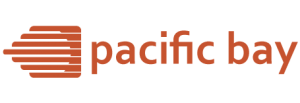Navigating the Path to Profit: Strategic Monetization on YouTube
Embarking on a YouTube journey offers a myriad of opportunities for creators to earn revenue, turning passion into profit. With the right strategies, understanding of monetization milestones, and the innovative use of tools like YouTube bots (check out Ultra Bot), content creators can unlock their channel’s financial potential.
Optimizing Ad Revenue Through Viewer Engagement
Ad revenue stands as one of the primary sources of income for YouTubers. To maximize earnings from ads, creators must focus on increasing viewer engagement. High retention rates and longer watch times can lead to better ad placements and more lucrative deals. Engaging content, coupled with strategic use of keywords and tags, can attract a larger audience, thereby boosting potential ad revenue.
Diversifying with Merchandise and Brand Partnerships
Successful YouTubers don’t put all their eggs in one basket; they diversify their income streams. Launching personalized merchandise can significantly enhance earnings, as can partnering with brands for sponsored content. These partnerships not only inject direct earnings but also enhance channel visibility and credibility. Crafting a brand that aligns with the creator’s values and audience interests is crucial for this monetization avenue.
Harnessing Membership Models for Stable Income
Introducing channel memberships and Patreon campaigns can provide a stable, recurring income stream. These models allow dedicated fans to support their favorite creators through subscriptions, gaining access to exclusive content, perks, and a deeper sense of community. This direct line of support empowers creators to produce content without relying solely on ad revenue, giving them more creative freedom.
Utilizing YouTube Bots for Strategic Growth
In the context of monetization, YouTube bots can serve a positive purpose if used responsibly. They can simulate viewer interactions to test the effectiveness of monetization strategies, helping creators understand the potential impact of different content approaches without risking their organic audience. By leveraging bots as analytical tools, creators can fine-tune their strategies to optimize revenue streams.
Leveraging Super Chats and Crowdfunding
During live streams, Super Chats offer viewers a chance to highlight their messages by making a payment, which becomes a direct revenue source for the creator. Crowdfunding platforms like Kickstarter can also be used to fund specific projects or video series, allowing fans to contribute directly to the content they want to see. These methods encourage community involvement and can result in substantial financial support.
Transitioning to a Full-Fledged Business Model
As a channel grows, creators may choose to transition to a more formal business model, incorporating and seeking out larger sponsorship deals or creating an independent platform for their content. This professional leap can open up a world of opportunities, including licensing deals, speaking engagements, and more.
In summary, monetizing a YouTube channel requires a multifaceted approach that goes beyond just ad revenue. By engaging viewers, diversifying income streams, capitalizing on direct support models, and utilizing YouTube bots for strategic insights, creators can unlock numerous revenue streams on their YouTube journey. The road to monetization is a voyage of creativity, adaptation, and business acumen, leading to not just financial rewards but also a fulfilling career as a YouTube content creator.


